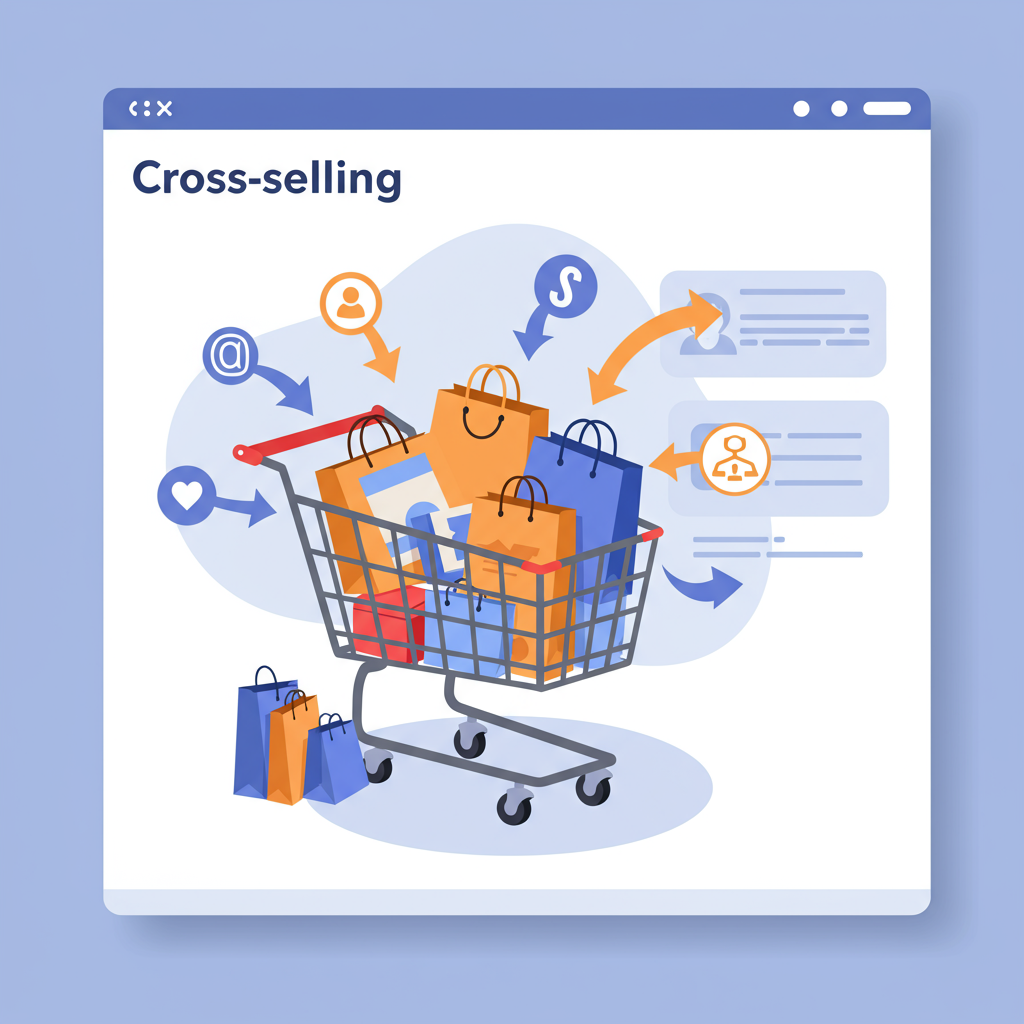Discover how to boost your Average Order Value and enhance customer satisfaction by strategically recommending complementary products.
Hey there, fellow Shopify merchants! Have you ever wondered how to squeeze more value from each customer who visits your store?
It’s a common challenge, isn’t it? We spend so much time and effort acquiring new customers, but often overlook the immense potential within our existing customer base.
That’s where cross-selling comes in – a powerful, often underutilized strategy that can significantly impact your bottom line.
I’ve personally seen how effective a well-executed cross-selling strategy can be in boosting revenue, improving customer satisfaction, and even clearing out inventory.
In this comprehensive guide, I’m going to walk you through everything you need to know about implementing cross-selling effectively on your Shopify store.
So, let’s start with the basics: what exactly is cross-selling? Simply put, it’s the practice of recommending complementary products to a customer based on what they’re already purchasing or considering.
Think of it like this: if a customer is buying a new smartphone, you might suggest a phone case, screen protector, or a pair of wireless earbuds.
It’s about adding value to their primary purchase by offering items that enhance its utility or experience. It’s distinct from upselling, which encourages buying a more expensive version of the same product.
Now, why should you bother with cross-selling? The benefits are truly substantial and directly contribute to your store’s growth.
First and foremost, it directly increases your Average Order Value (AOV). More items per cart means more revenue per sale, without necessarily needing more traffic.
Second, it significantly enhances the customer experience. When done right, you’re not just selling more; you’re helping your customers discover products they might genuinely need or want, but hadn’t thought of.
This thoughtful approach can build stronger customer loyalty and trust. Customers appreciate when you anticipate their needs and make their shopping easier.
Third, it improves your marketing Return on Investment (ROI). You’ve already spent money acquiring the customer; cross-selling leverages that existing relationship to generate more revenue from the same acquisition cost.
It can also be a fantastic way to move slow-moving inventory by bundling it with popular items, turning potential dead stock into profitable sales.
Now, let’s get into the nitty-gritty: how to implement cross-selling effectively on your Shopify store. This is where the rubber meets the road.
The first crucial step is understanding your products and, more importantly, your customers. Dive deep into your sales data and analytics.
Look at purchase history: what products are frequently bought together? This data is your goldmine for identifying natural cross-sell opportunities.
Segment your customers. Are there specific groups or demographics who tend to buy certain combinations? Tailoring recommendations makes them far more effective.
On your product pages, utilize sections like “Customers also bought,” “Related products,” or “Frequently bought together.” Many Shopify apps can automate and optimize these sections using AI.
Consider adding recommendations directly to the cart page. A gentle reminder like “Don’t forget these essentials!” or “Complete your look with…” can work wonders just before checkout.
Post-purchase emails are another fantastic opportunity. After a customer buys a camera, for instance, an email a few days later about lenses, tripods, or camera bags can lead to a second sale.
Product bundling is a classic and highly effective cross-sell tactic. Offer a slight discount when complementary items are bought together as a package.
Many Shopify apps specialize in personalized recommendations, using advanced algorithms and AI to suggest highly relevant items based on browsing behavior, purchase history, and even real-time interactions.
Don’t overlook pop-ups or exit-intent offers. A small, relevant suggestion for a complementary item before a customer leaves your site can convert an almost-lost sale into a multi-item order.
Even your thank you page after a purchase can feature a limited-time offer on a complementary item, capitalizing on the customer’s positive post-purchase glow.
Remember, relevance is paramount. Don’t recommend a dog leash to someone buying cat food. Irrelevant suggestions can annoy customers and undermine trust.
Avoid overwhelming your customers with too many options. Keep recommendations focused, clear, and easy to understand. Quality over quantity is key here.
Always test your cross-sell strategies. A/B test different recommendations, placements, pricing strategies for bundles, and even the wording of your calls to action.
A clear call to action is crucial. Make it incredibly easy for them to add the suggested item to their cart with a single click.
What do you think about these strategies so far? I’d love to hear your thoughts and experiences!
Measuring success is vital to refining your approach. Track metrics like your Average Order Value (AOV), the conversion rate of recommended products, and the overall revenue increase attributable to cross-selling efforts.
Cross-selling isn’t just a sales tactic; it’s about providing value, enhancing the shopping experience, and building a deeper relationship with your customers.
By thoughtfully integrating cross-selling into your Shopify store, you’re not just increasing sales per transaction.
You’re building stronger, more loyal relationships with your customers and creating a more robust, profitable business model.
So, go forth and start cross-selling! Your bottom line, and your happy customers, will thank you for it.






